Everyone has heard of chestnut, but not everyone knows its varieties and differences. We will tell you how to distinguish edible and inedible chestnuts, about their types and varieties.
Material Content:
Types and varieties of chestnuts
The plant can be found in almost all parks and on city streets - horse chestnut. He belongs to the Sapindov family. The tree has inedible fruits that have many types.
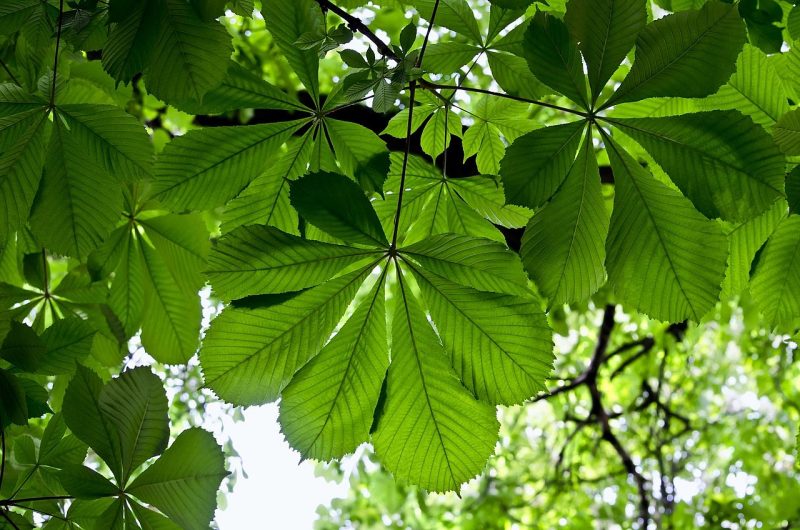
The most common:
- Californian. It differs in flowers of a white-pink shade with a bewitching aroma. Inflorescences have a height of 20 cm.
- Yellow. Cold-resistant look with yellow flowers.
- Naked. Has a decorative crown.
- Indian. The flowers are white with red and yellowish spots. Fruits grow spiny.
- Small-flowered. The tree blooms with white flowers with pink stamens.
- Red. Flowers are painted in bright red. Fruits without thorns.
- Japanese. The flowers of the tree are white-yellowish, and the fruits are distinguished by their elongated shape.
- The meat is red. The fruits are slightly prickly, and the flowers are red.
Edible chestnuts. They belong to the Bukov family. They prefer to grow in temperate and warm climates.
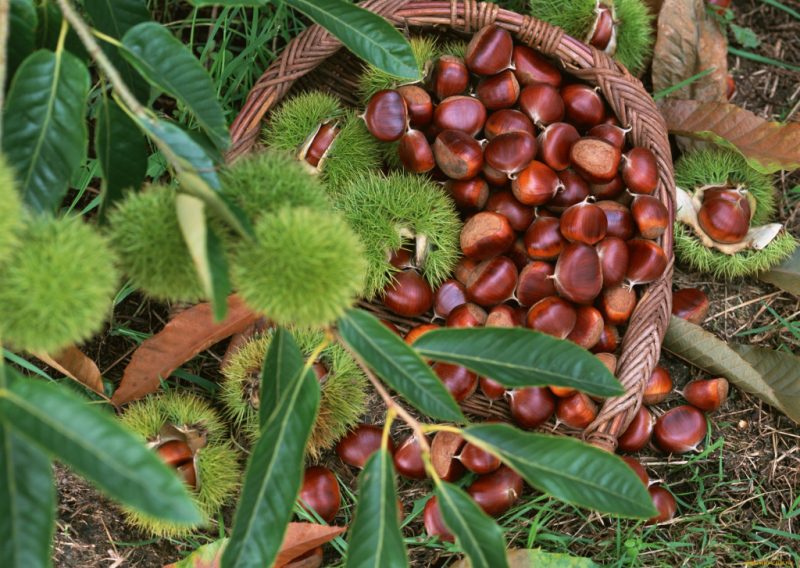
Types of edible chestnut:
- Gorodkovy. It has the largest fruits among all chestnuts.
- American. It is also called toothed. The tree is very resistant, able to withstand frost of -27 degrees.
- Henry.
- Chinese. Significantly superior to the known types of chestnuts in taste. Also widely used in the production of wood.
- Undersized. The lowest tree attributed to decorative forms. Does not grow more than 15 m.
- Sowing chestnut. He does not like drought and does not tolerate severe frosts. It can propagate vegetatively and by seeds.
- Segyu. It is immune to pathogenic fungi that affect chestnuts.
- Australian.Fruits grow on an eternally green tree.
The most common - seed chestnut grows low in size (no more than 15 m). Due to its unsurpassed taste, it is widely used for cooking.
How to distinguish edible and inedible chestnuts
You can distinguish noble fruits from horse fruits by their appearance, by the foliage of the tree, its flowering and taste.
Foliage and flowering chestnut
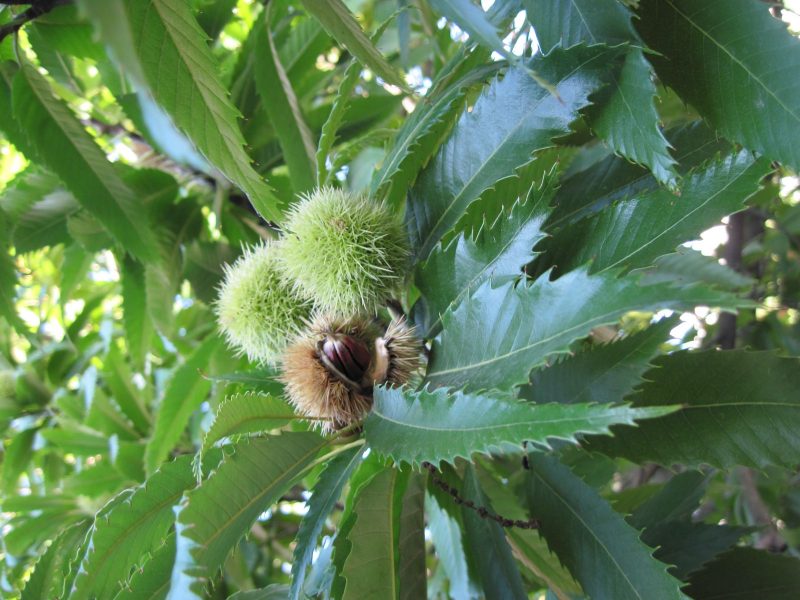
Trees on which edible fruits grow are distinguished by foliage. The leaves do not grow in fives, as in the inedible, but one by one.
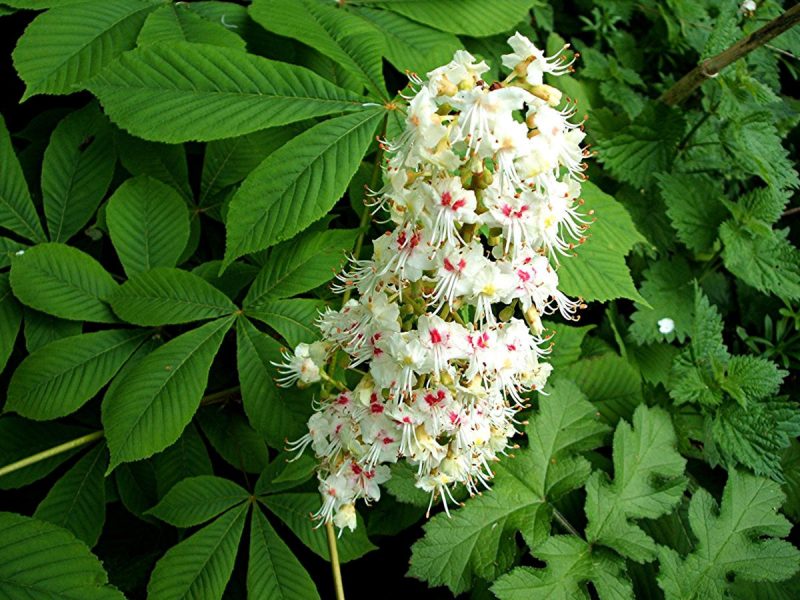
Horse chestnuts have an amazing flowering, everyone will notice the beauty of the flowers. And you can walk past a flowering tree with edible fruits and not see the flowers. From the second half of spring, you can admire the unique beauty of a blossoming horse chestnut and enjoy the unsurpassed aroma. Flowering in trees lasts several weeks.
Appearance and height of the tree
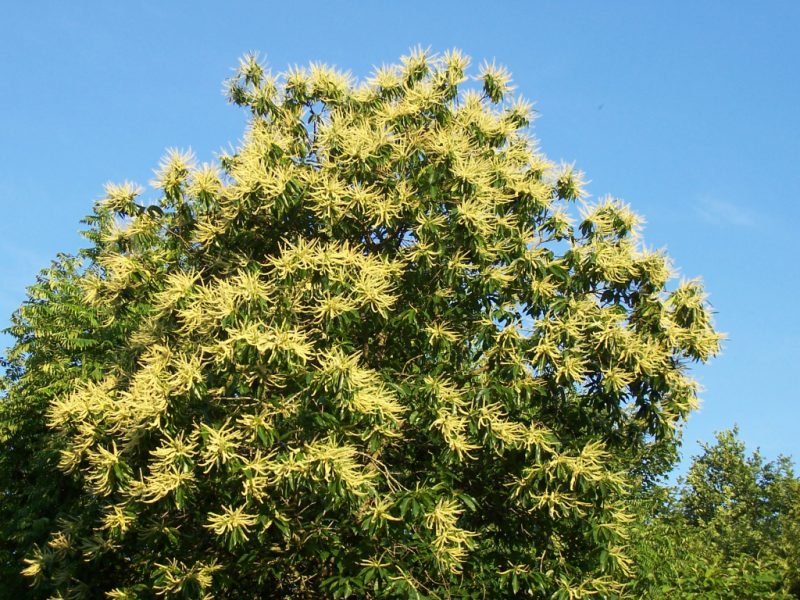
The plant on which edible fruits grow is higher than that of the horse variety. Depending on the species, it can grow to a height of 35 m. Trees of various species have a beautiful, wide crown.

Wild chestnut rarely exceeds a height of 15 meters, but individual specimens reach 25 meters. Shrubs also grow, which have a height of 1.5 - 3 meters. The trees have a beautiful, dense crown.
Size and coverage of the fetus
The difference lies in the size of the kernel. Edible smaller than horse. Inedible fruits are covered with rare thorns, which are removed without difficulty. On edible - multiple thorns. From this they resemble hedgehogs. It is difficult to peel the fruit.
The fruits of the chestnut are green boxes. A tree with inedible nuts contains only one seed in a box, sometimes two. Noble trees have 3-7 seeds.
In horse chestnut, the nut tastes bitter, and in a noble tree, the fruit is sweetish.
There is one common quality that combines different varieties - this is the similarity of the fruits. Edible and inedible seeds have a brown color and a smooth, pleasant to the touch surface with a small bright spot.
Where edible and inedible chestnuts grow
Plants with edible fruits have chosen warm places.
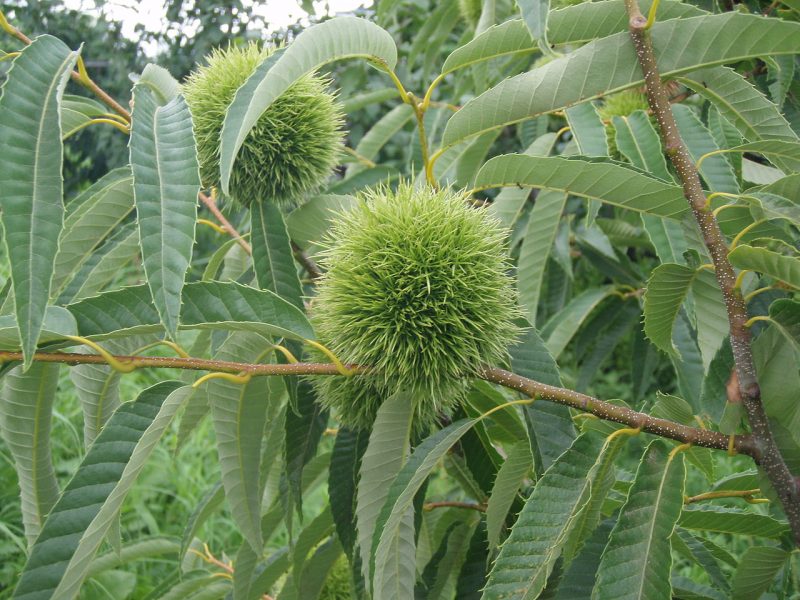
Grow in:
- Asia
- Spain
- RF;
- in France;
- southern strip of Russia;
- Italy
- America
- in many European countries;
- in the Caucasus.
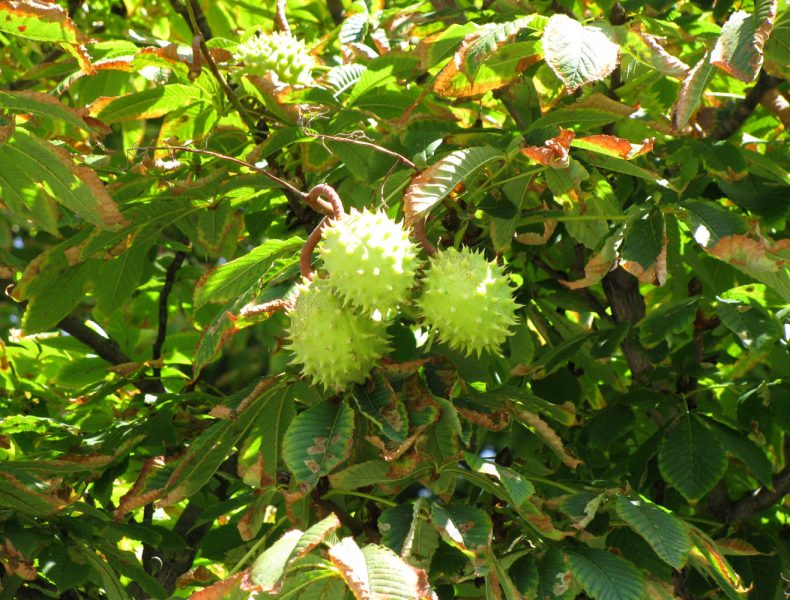
Horse chestnut is found in:
- America
- India
- Belarus;
- Eastern United States
- Europe
- Russia;
- Crimea;
- southeastern US states;
- Japan.
Chestnuts
Soup
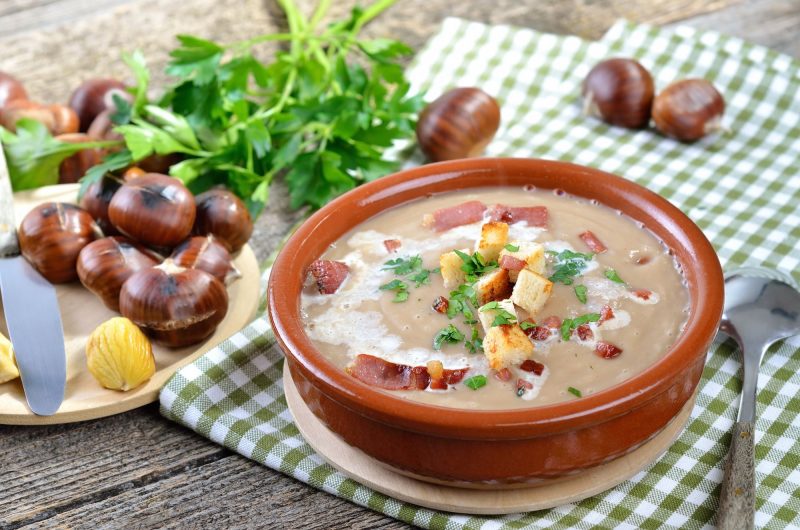
- chestnuts - a handful of peeled;
- cream - 0.5 cups;
- meat broth - 2 mugs;
- pepper;
- flour - 1 tbsp. a spoon;
- salt;
- celery - 1 stalk;
- butter - 1 tbsp. a spoon.
Cooking:
- Chop chestnuts. Chop celery. To mix. Pour the broth. Cover and simmer for half an hour.
- Beat the boiled products with a blender.
- Place oil in a hot skillet. Melt. Pour flour and fry. Send in mashed potatoes. Boil. Add salt and sprinkle with pepper.
- Pour in milk. Boil.
Boiled
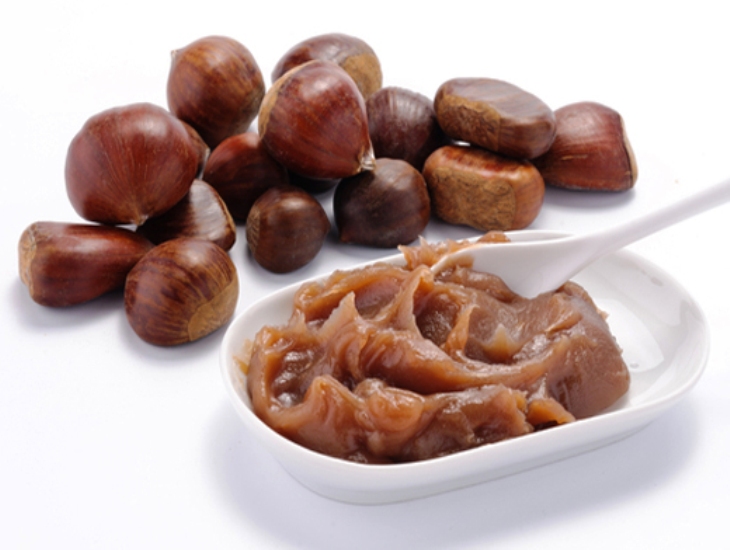
Ingredients:
- strong coffee - 100 ml;
- chestnuts - 500 g;
- cognac - 3 tbsp. a spoon;
- yolk - 2 pcs.;
- fat cream - 0.5 cups;
- powdered sugar - 3 tbsp. spoons.
Cooking:
- Make cuts in the chestnut. Put in boiling water and boil for five minutes.
- Remove the peel. Boil a quarter of an hour.
- Stir the yolks. Pour in cream and add cognac. Beat. Pour coffee and mix. Add icing sugar. Boil until the mass thickens.
- Put the boiled fruits on a dish and pour over the sauce.
When ripen
Edible fruits ripen from September to November. Fresh nuts are very moody in storage and quickly moldy. Therefore, on sale there are dried and canned.
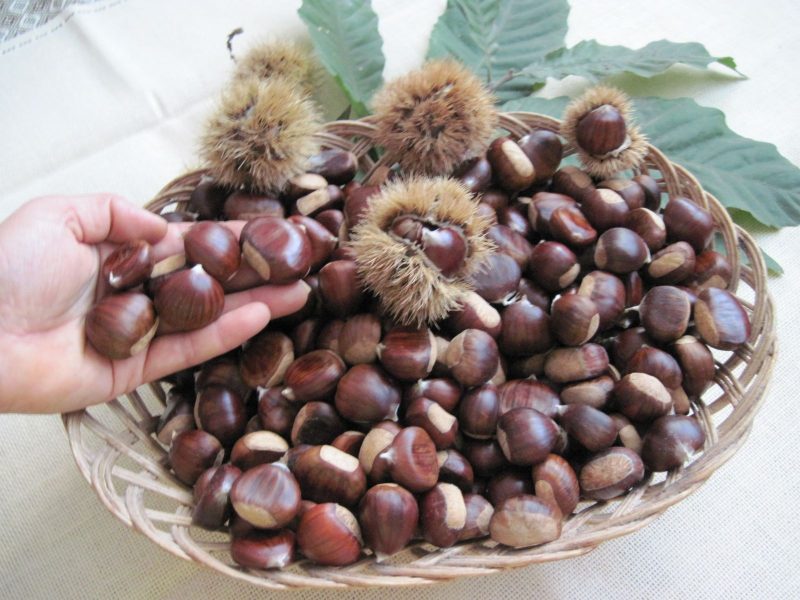
Edible chestnuts begin to bear fruit only at the age of fifteen. Then the fruits on the trees grow annually and in large quantities. Chestnuts in a peel from a tree fall in two weeks.Often they are knocked down with the help of long poles, previously clearing the ground under the trees from leaves and branches.
The food is mainly used medium and large. About 300-400 kg of fruits are harvested per hectare. In artificial conditions, the tree grows no more than 50 kilograms, but in natural conditions - the yield reaches 300 kilograms.
Edible fruits:
- bake;
- fried;
- added to flour, which helps to achieve a higher taste;
- widely used in confectionery.
Fresh seeds are pleasant and sweet to the taste. Those who have passed the heat treatment acquire taste qualities similar to potatoes.
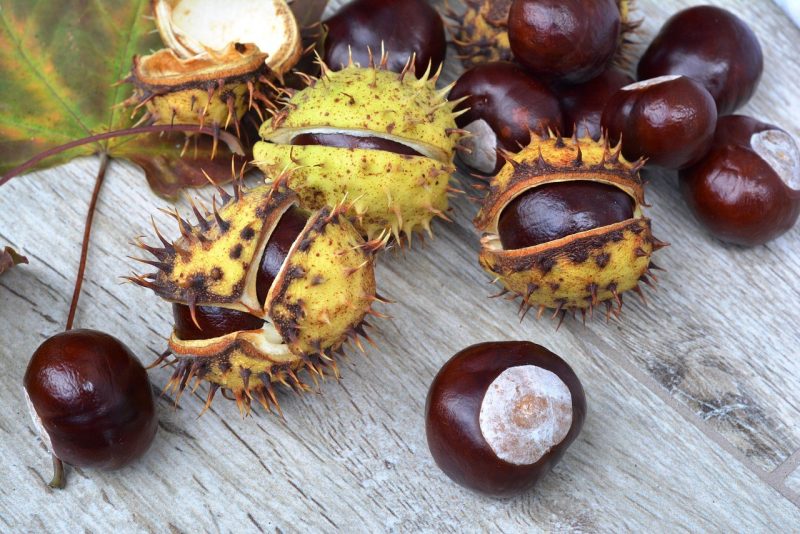
Horse chestnut matures earlier than its fellow. Fruits reach maturity in August, September. In the spring, a large number of chestnuts are tied in a tree, but to grow everything is not enough strength. Therefore, excess fruit is discarded in the summer. And in the last days of August on a tree you can see only large, ripened fruit-chosen ones.
Despite the fact that horse chestnut does not have edible fruits, they are intensively used in folk medicine. Thanks to beautiful flowering and a thick, beautiful crown, the seeds are used for landscaping.












